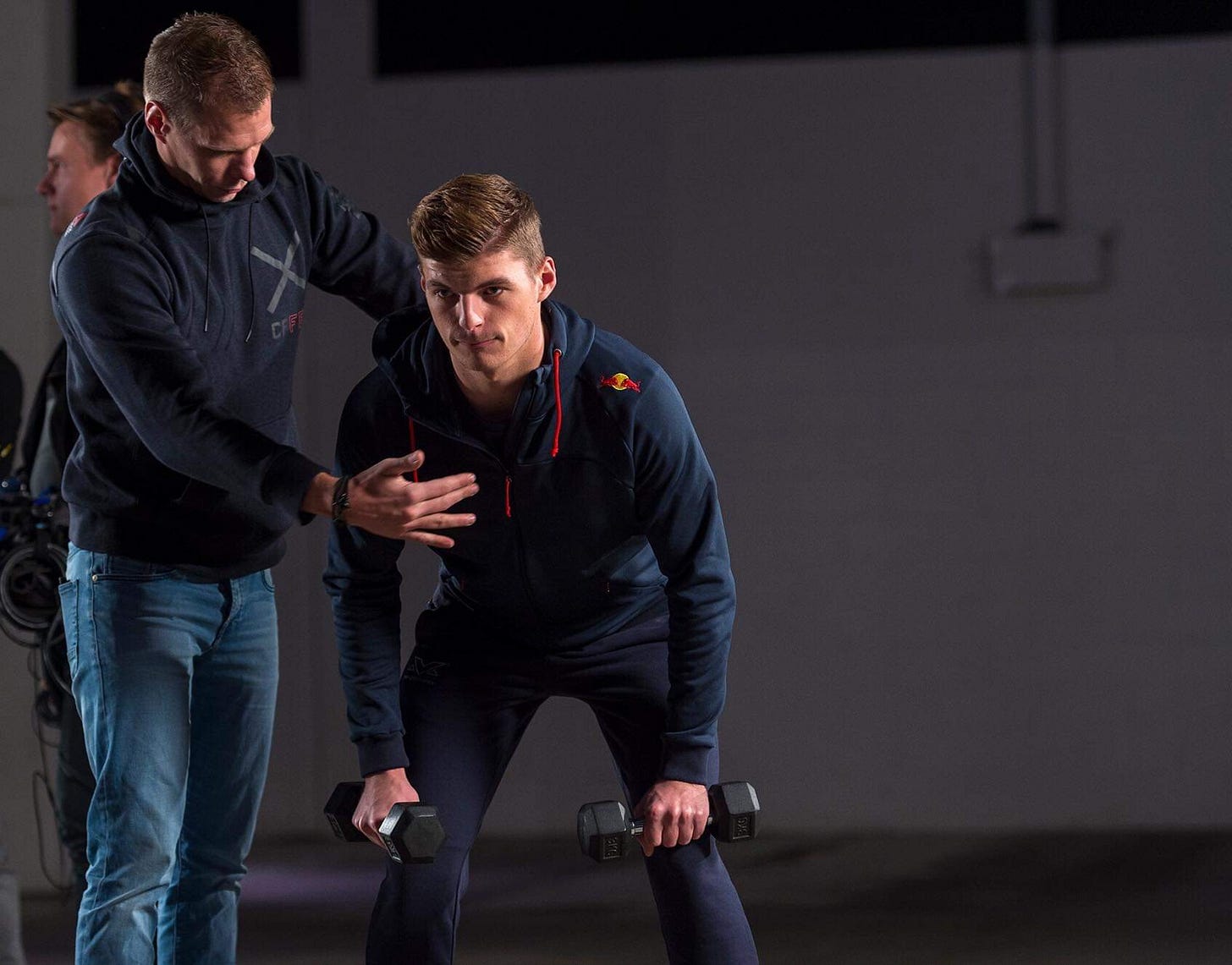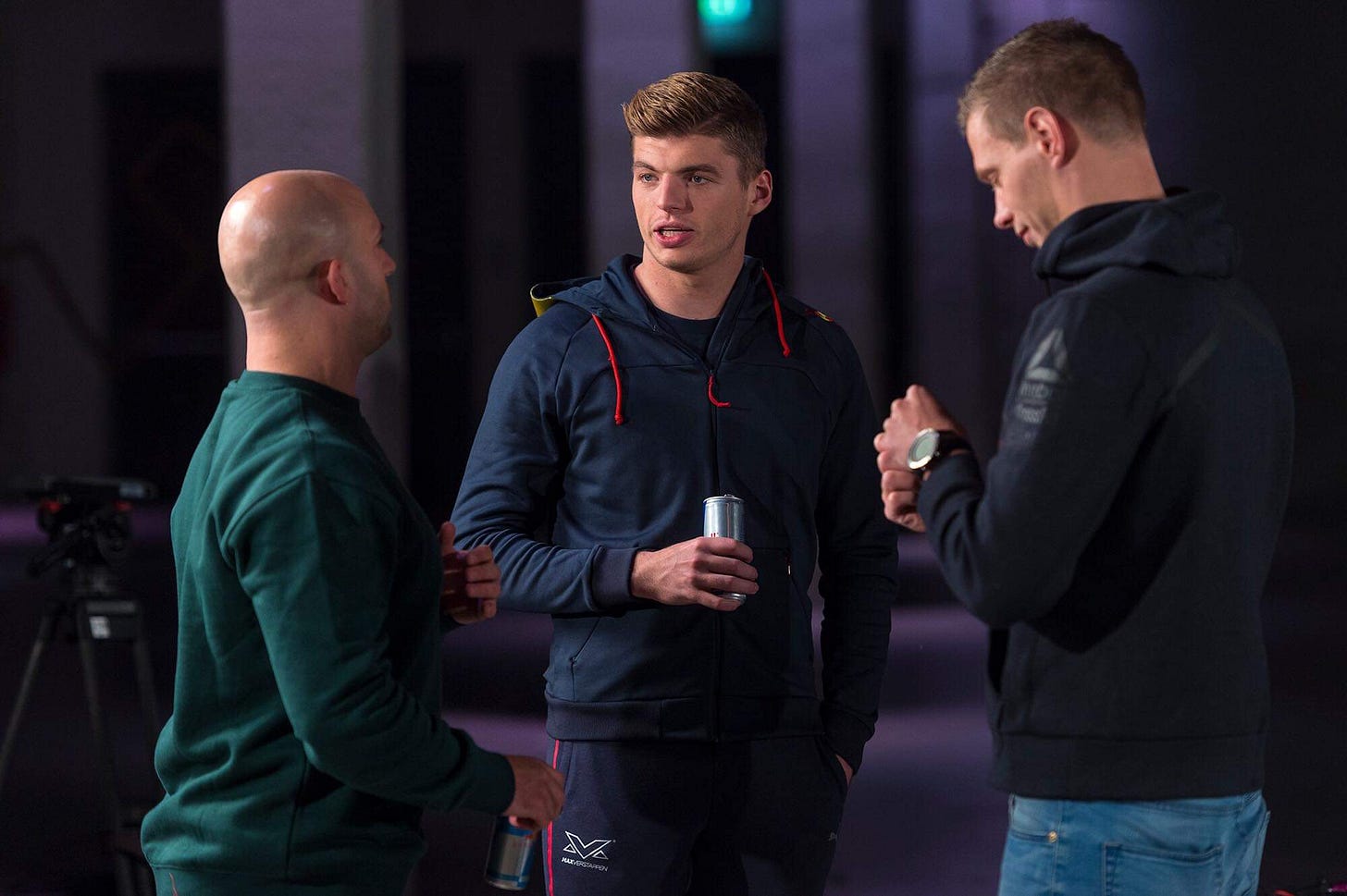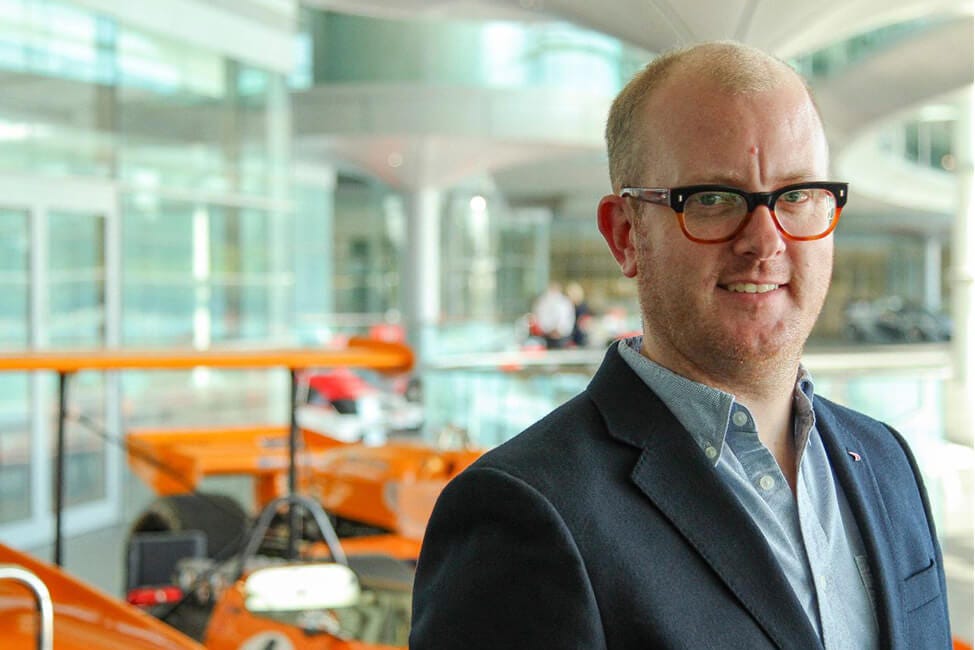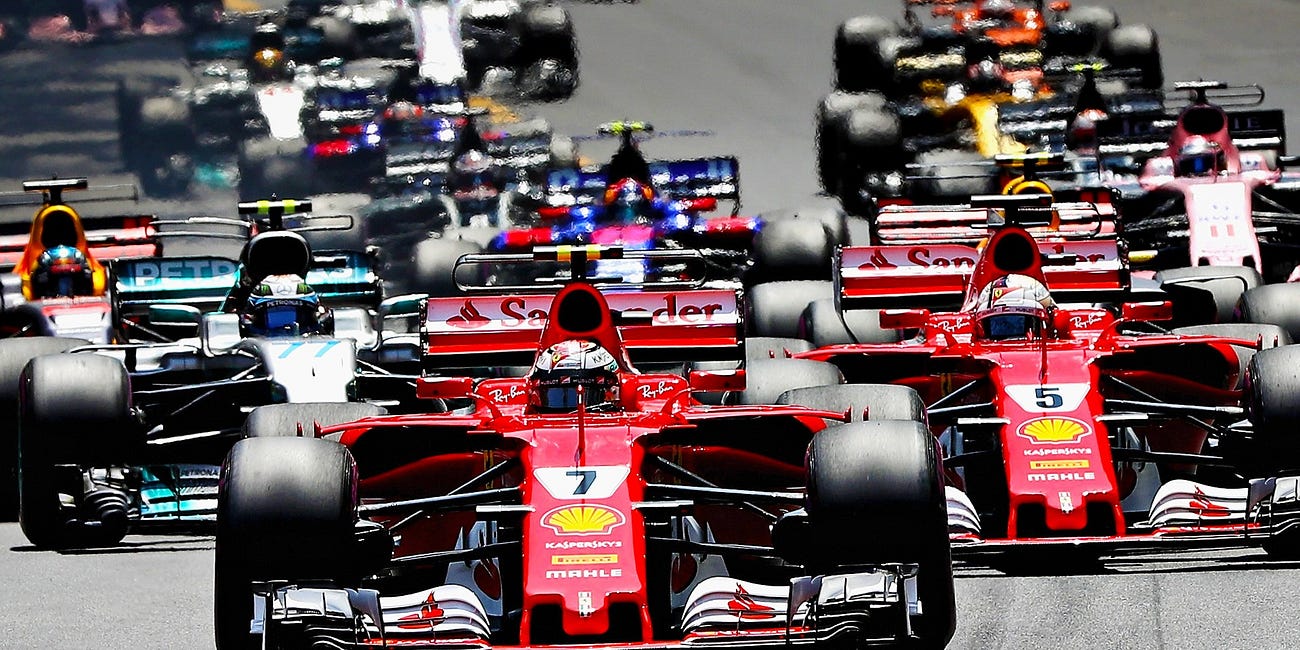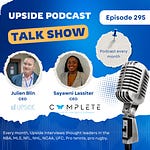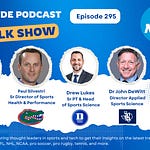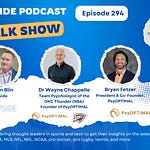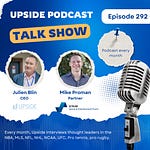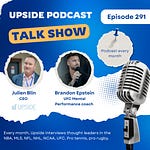Today we have the honor of interviewing Pieter Bulsink, CEO of Maverick Training, a sports performance company focused on elite athletes in F1 and other sports.
Pieter has been working with top athletes such as 4 times world champion in F1 Max Verstappen (Red Bull).
Picture: Pieter Bulsink (left), Max Verstappen (right)
Picture: Max Verstappen (middle), Pieter Bulsink (right)
Pieter has also worked with top women drivers such as Emely De Heus, F1 Academy Driver and Red Bull - Ford Junior for the last 2 years.
Picture: Pieter with Emely De Heus, F1 Academy Driver and Red Bull
Pieter has also worked with talented young drivers such as Morris Schuring, the second youngest 24h Le Mans winner (2024), and youngest winner of the wingfoot award for fastest double stint during the 24h Le Mans.
Pictures: Pieter with Morris Schuring
📝Show Notes: Through this interview, we touched on his background, and his role at at Maverick Training. He then discussed what his typical day looks like. He also touched on his approach towards innovation, performance (motor) and cognitive training, and biofeedback. We also discussed the importance of technologies in F1 such as OmegaWave and Transcranial Alternating Current Stimulation (tACS) hardware for his athletes. He also touched on the importance of neck training in F1 and how new solutions like Kinmetrix are a game changer there. Pieter also discussed how he sees technologies impacting the world of F1 from a performance cognitive training, recovery perspective in the coming years. Lastly he gave us his thoughts on what makes Max Verstappen so special.
You can read the full transcript of the podcast interview with Pieter located at the top of this blog post.
Here are the quotes from the interview with Pieter:
Q1. Please tell me about your background and your role in your company.
"I started out as a professional athlete in a world where talent was never the issue, but optimization was. I spent years working with elite athletes, dissecting performance at every level—physically, mentally, and cognitively—to understand what truly separates the best from the rest. At Maverick, my role is straightforward: I ensure that elite athletes don’t just compete; they dominate. Our focus is on engineering resilience, sharpening cognition, and creating overcapacity, so when race day comes, they are not just fast—they are unshakeable."
Q2. What does your typical day look like?
"We don’t really have a typical day because every athlete’s needs are different, and every session has to be tailored to maximize their performance. Some mornings, I’m in the gym, pushing a driver through high-intensity physical or cognitive training. Other times, I’m deep-diving into performance data, analyzing brain endurance, reaction times, and stress adaptation. Every piece of technology we use, every drill, and every test is aligned with one goal: stacking tools and methods that build a foundation for undeniable victories. There’s no randomness—everything is structured for peak performance."
Q3. What is your approach towards innovation, performance (motor and cognitive) training, and biofeedback? How important are technologies like OmegaWave and Transcranial Alternating Current Stimulation (tACS) hardware for your athletes?
"Technology isn’t the answer, but it is an amplifier. If you don’t have a strong system in place, no device in the world will save you. Our approach is simple: stress, adapt, and dominate. We track physical readiness with OmegaWave because guessing is for amateurs. OmegaWave allows us to understand not just whether an athlete is ready to train but why—whether their central nervous system is primed, whether their cardiovascular system is under stress, and how their recovery is progressing."
"We also use transcranial alternating current stimulation (tACS), not because it’s trendy, but because neuromodulation unlocks reaction speed and cognitive function in ways traditional training can’t. It allows us to prime the brain for faster processing and improved reaction time, creating a hyper-adaptive state where neural pathways fire more efficiently. This is crucial for a sport like F1, where split-second decisions mean the difference between victory and disaster."
Q4. What are some of your favorite technologies that you use? Why?
"If I had to pick three: First, OmegaWave, because it doesn’t just assess physical readiness—it looks at neurological recovery too. In F1, we aren’t just interested in physical fatigue; we need to know how an athlete’s brain is functioning under stress."
"Second, tACS, because it helps us optimize DC potential in the brain, improving cognitive performance under extreme conditions. Drivers face immense mental fatigue from high G-forces, constant task-switching, and real-time decision-making. tACS helps sustain their cognitive sharpness when it matters most."
"Third, brain endurance training with the Soma platform. It’s not just reaction training; it’s decision-making, inhibition control, and stress management. It allows us to mimic real race conditions, forcing athletes to maintain peak cognitive function even under exhaustion. This is where we separate the good from the great."
Q5. How important is neck strengthening for F1 drivers?
"It's basically the easiest thing to think of when you're training, but it's really
important, not because of your head wobbling, but because your brain is the command center for every split-second decision, reaction, and adjustment you make under pressure. If your cognitive endurance fails, so does everything else”."Rotation is one of the biggest elements for neck training, as a F1 driver, you need to turn, and look into the turn and if that fails, you go into lateral flexion."
"So training the neck has all to do with eyesight, with information processing, and therefore your rotation needs to be as strong as you can ever be to maintain the g-forces. That means up to 6.5 g's for 10 seconds in a turn”.
Q6. What type of training do F1 drivers have to do?
"It depends on the driver’s needs and their physiological assessments. If we find they need to build aerobic endurance, then their training may involve 90-minute to two-hour sessions at low intensity to maximize recovery while still improving capacity. But if we’re working on anaerobic performance, their sessions will be shorter and more intense, designed to build explosive power and resilience."
"Brain endurance training is also non-negotiable. To make it effective, we schedule it at least three times a week for a minimum of 20 minutes per session, tailored to the cognitive demands of each driver. In-season drivers typically undergo five physical training sessions and three cognitive training sessions per week to maintain peak performance."
Q7. When looking to adopt a new technology, what are the most important criteria?
"The number one question we ask is: does it create measurable adaptation? We don’t use technology for the sake of it—it has to provide real, trackable improvements. We also consider whether it can integrate into the chaos of high-performance sports. Some tools are excellent in controlled environments but fail when applied in real-world settings. If an athlete can’t use it seamlessly while traveling, at the track, or between media obligations, it’s not practical for us."
"Usability is another major factor. Take Selma, for example—it’s mobile, can be used anywhere, and allows us to train cognitive function on the go. Whether an athlete is in a hotel, on a plane, or in a simulator, they can still train their brain, which is critical for maintaining performance."
Q8. In the coming years, how do you see technologies impacting the world of F1 from a performance, cognitive training, and recovery perspective?
"Everything is shifting towards optimization. It used to be about having the best car and the biggest talent—now, teams realize they have to optimize the athlete just as much as the machine."
"So I see a lot of potential in developing technology that edge that performance. With that in mind Kinmetrix is one of them and I think it is the best tool coming on now for neck assessments and getting more data into a specific program instead of a generic program on neck training."
"Kinmetrix is a game-changer for neck assessments. It’s no longer just about strength; we can now establish baselines and track individual weaknesses. This means we can customize neck training, which is critical when drivers experience up to 6.5 gs in corners."
"On the cognitive side, Soma is leading the way because it allows structured overload training. We’re moving beyond basic reaction drills to fully personalized cognitive development—task-switching, decision-making, memory recall—all trained under conditions that mimic real races. That’s where the future is heading."
Q9. What makes Max Verstappen so special?
"Overcapacity. That’s the key to why he’s different. Max makes driving look easy, which means he has extra cognitive bandwidth while others are maxed out just trying to keep up. When most drivers are using 100% of their mental resources just to handle the car, Max still has capacity left to process additional information."
"A great example is how he notices things other drivers miss. During one race, he asked his engineer, ‘Is Ferrari doing a pit stop?’ because he could hear them over the radio while still racing at 300 km/h. Most drivers are fully consumed by just staying on the track—Max is strategizing in real-time."
"That’s what separates the best. When others are at their limit, he still has more to give."
You may also like:
🏎️ The F1 tech market
Formula 1 (F1) is one of the most popular sports in the world, with 550M F1 fans tunning in every year to watch F1 races. It is also one of the most tech savvy sports on the planet.



